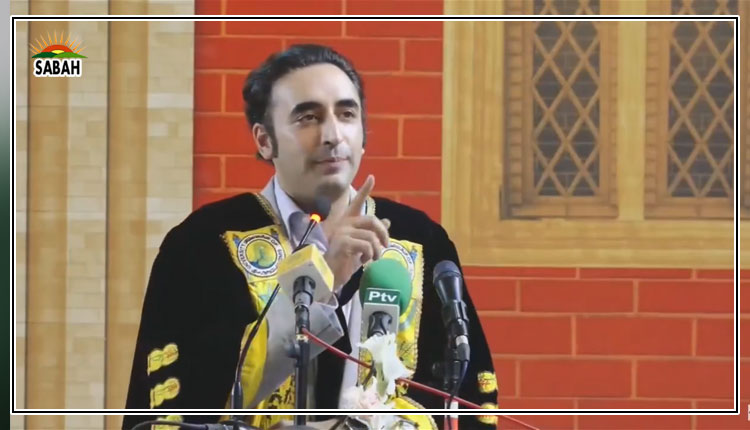How not to waste food … Zile Huma
The International Day of Awareness of Food Loss and Waste (IDAFLW) was observed on September 29, 2023. The theme of this year’s IDAFLW was ‘Stop Food Loss and Waste; for People and Planet’.
According to the Greenly Institute, “Food loss refers to uneaten agricultural, forestry, and fishery products whereas food waste refers to edible food that is intended for human consumption, but instead gets discarded or expires. Food waste can occur in many different situations during preparation, sales, or food service. It also includes plate waste, spoiled food, and discarded peels and rinds”. Food loss can happen during the process of harvesting, storage, transportation and distribution.
Food loss and waste are vital issues to achieve Sustainable Development Goal 2 – ‘zero hunger’ – by 2030. According to a report by the United Nations, between 720 million and 811 million people are estimated to have gone hungry in 2020. One of the main reasons for food hunger and food insecurity is the wastage and loss of food all around the world.
There are several causes for this loss and wastage of food. First of all is climate change. Climate-led disasters like floods and droughts reduce crop yields, thus leading to food insecurity. The 2022 floods in Pakistan had a huge negative impact on the country’s agriculture sector.
According to the World Bank, “housing; agriculture and livestock; and transport and communications sectors suffered the most significant damage, at USD 5.6 billion, USD 3.7 billion, and USD 3.3 billion, respectively” due to the floods in Pakistan. Due to these floods, crops were destroyed and farmers could not grow new crops due to standing water in the fields, displacement of farmers, and lack of savings to grow new crops.
Second, in order to ensure quality assurance food is wasted. Consumers demand the best and fresh food to buy. To provide the best quality food, huge quantities of food are discarded and end up in landfills. Mishandling and use of old technologies at the time of harvesting, packing, and transportation leads to loss of food. Farmers in developing countries do not have access to information and modern technologies to improve their methods. Lack of awareness and an outdated approach to recycling and reuse techniques are also primary reasons for food loss and waste.
There are several negative impacts of food waste and loss on our planet. A large amount of food waste ends up in landfills that produce methane, nitrogen oxide and carbon dioxide which also contributes to global warming and climate change.
In 2013, the FAO had estimated that 1.3 gigatons of edible food is wasted each year, which then releases 3.3 gigatons of CO2 equivalent. Sometimes food is thrown on the sides of roads and streets making our environment unhealthy and unhygienic. Such heaps of waste can also lead to disease. Moreover, wasted food has economic costs starting from sowing, harvesting, transportation, and purchase by consumers. Such costs have huge economic repercussions on staggering economies.
The prevention of food waste and loss can boost productivity and economic growth. Similarly, food waste and loss are also a burden on already depleting natural resources like water and soil nutrients which are utilized to grow these foods. Similarly, millions of people who do not get enough food and remain under nourished across the globe. According to the World Health Organization (WHO), global hunger numbers rose to as many as 828 million in 2021. If food is prevented from wastage or loss, we can have more available food to feed the growing population and eliminate hunger across the globe.
There are several ways to avoid food waste and loss. First of all, modern technologies and techniques need to be introduced in lower-income countries to efficiently grow, harvest, pack, and transport food so minimum food loss occurs. Carefully harvested crops can maximize the output of the yield of crops. Efficient processing equipment can reduce food loss. Similarly, packaging design can lead to preserving food for longer periods and prevent it from perishing.
In addition to that, we need to transform our eating habits – so that leftovers can be avoided. Similarly, extra food in homes and restaurants can be distributed among the poor rather than being thrown out. Fruit and vegetable peels can be used as fertilizers for our gardens or can be used to feed domestic animals. Similarly, leftover ingredients can be used in many creative ways to cook new dishes at home.
Most importantly, we need to create awareness among people about waste and loss of food and teach techniques to reuse and recycle. In this regard, media campaigns and seminars/ conferences can be arranged in educational institutions and students can be engaged in activities to reuse their leftover food items through creative ideas.
The efficient consumption and production of food through modern technologies and practices can save large quantities of food from being wasted and lost. This can also ensure the achievement of the ‘zero hunger’ target, and sustain a healthy ecosystem.
The writer is a graduate of University of Oxford in Public Policy. She tweets/posts @zilehumma_1
Courtesy The News












